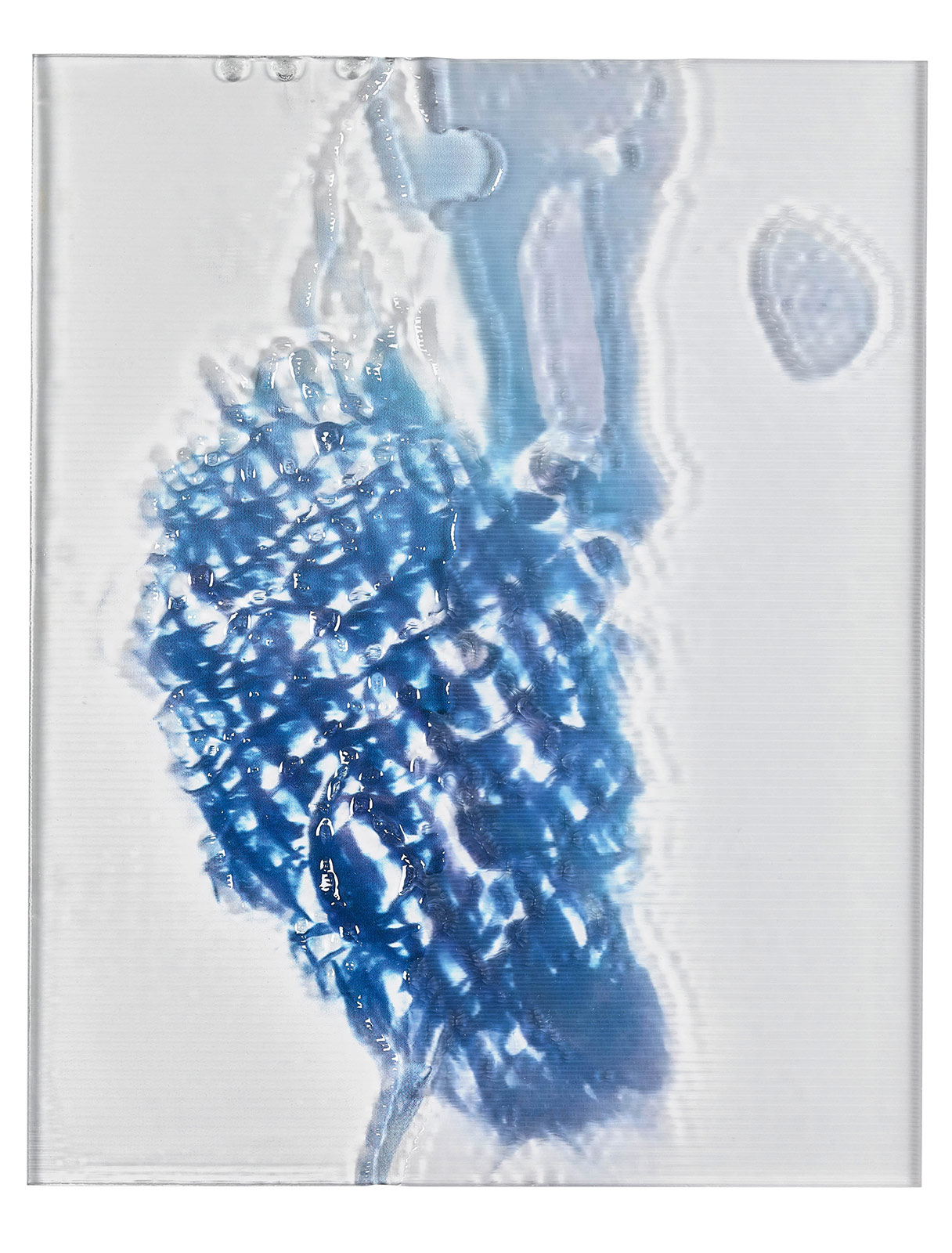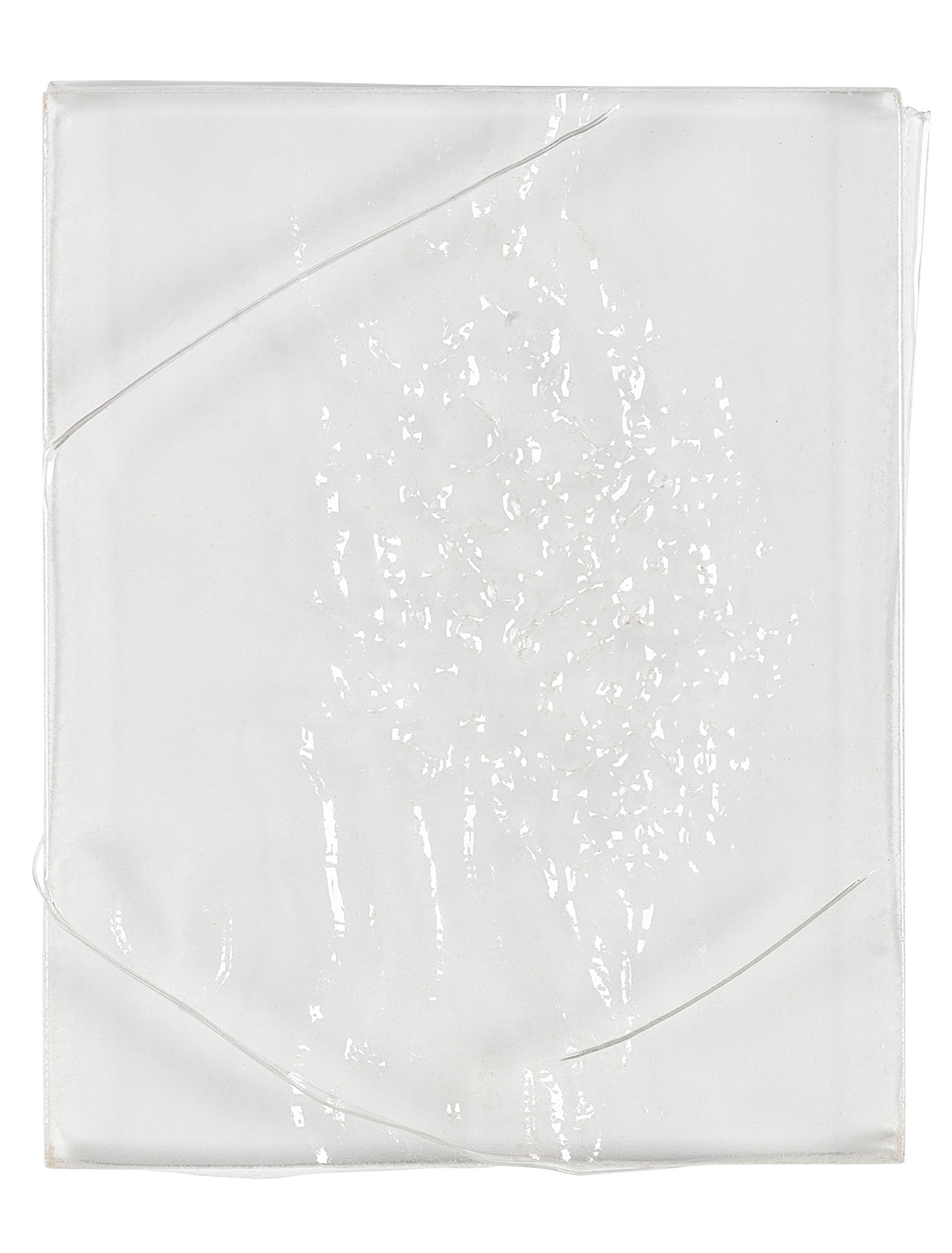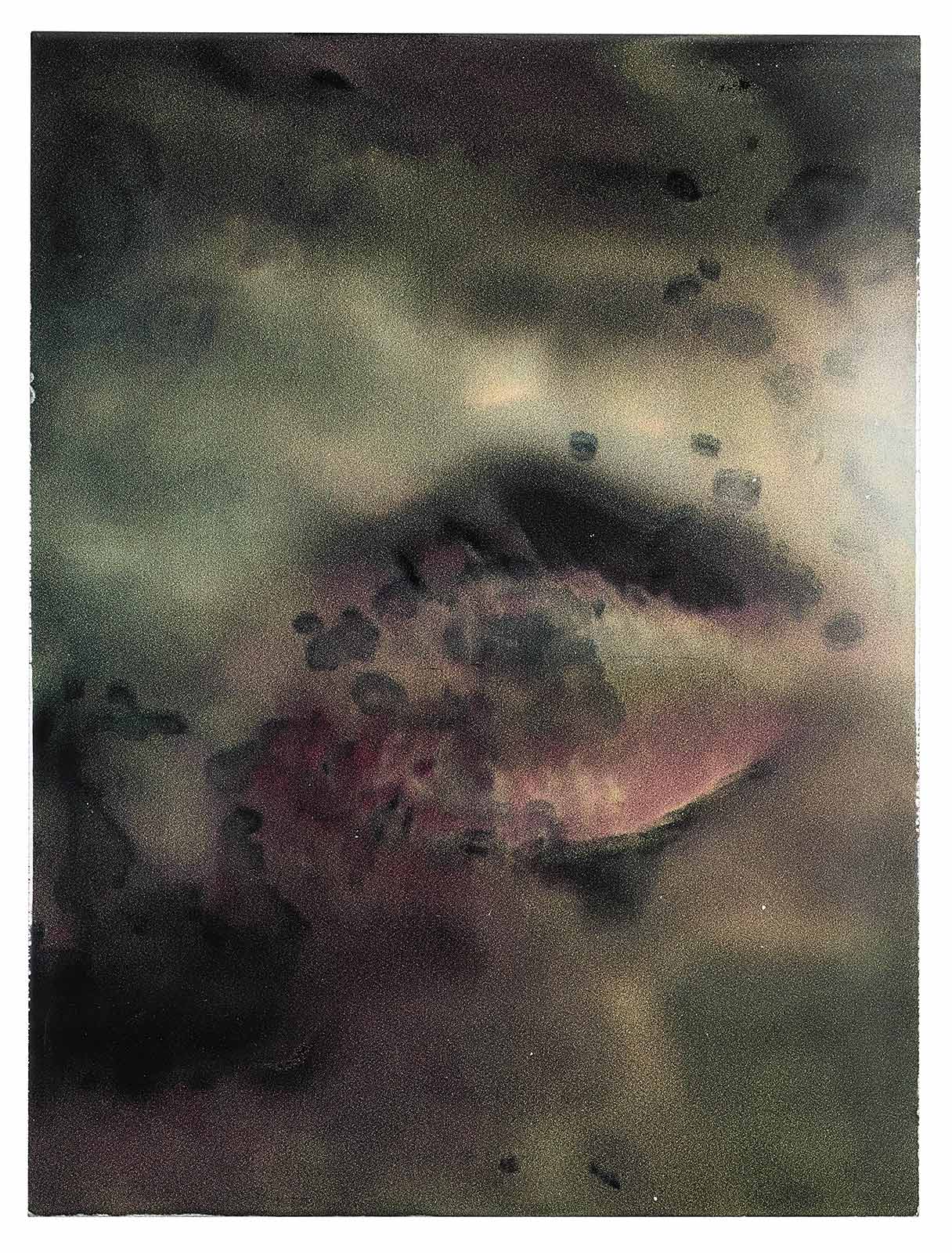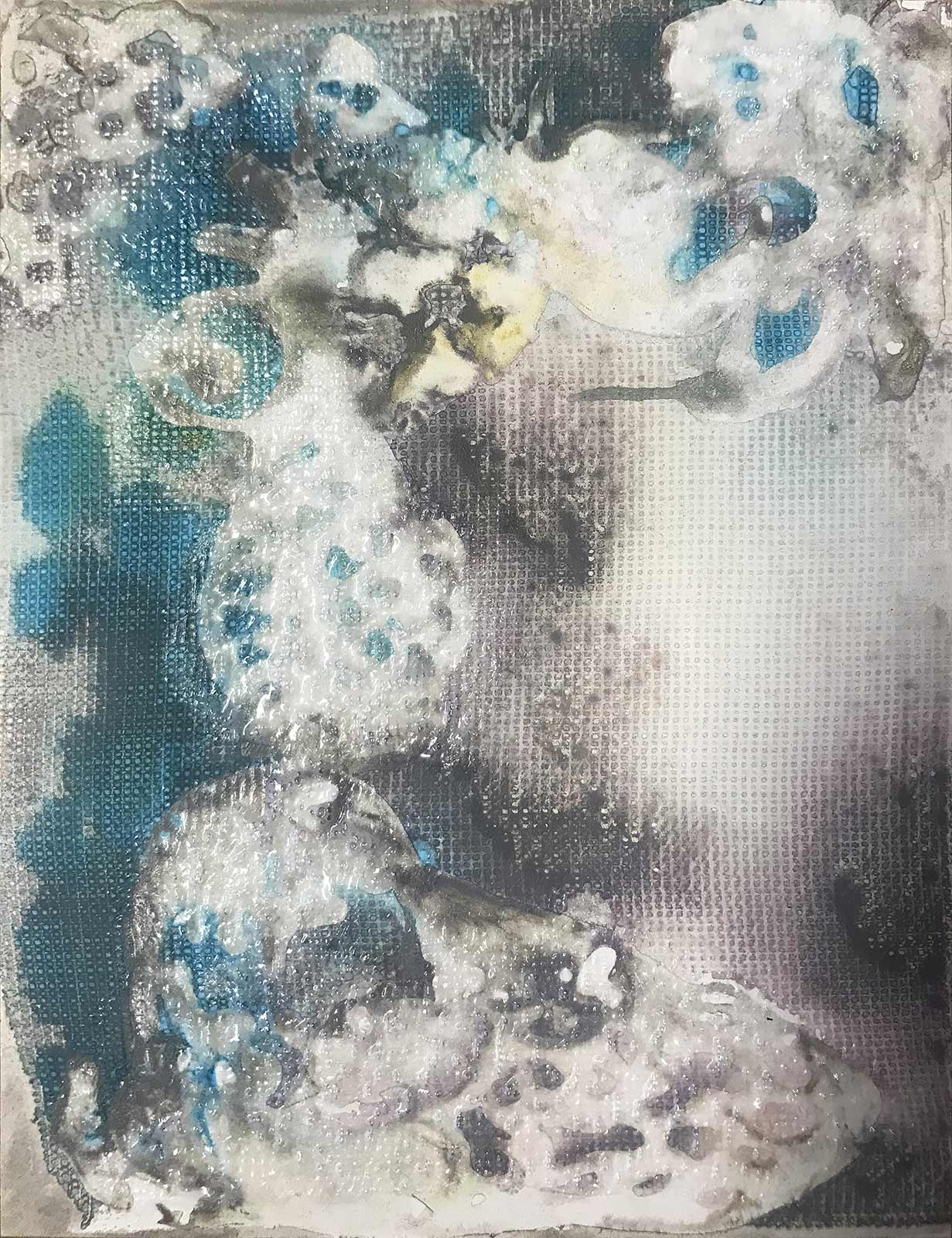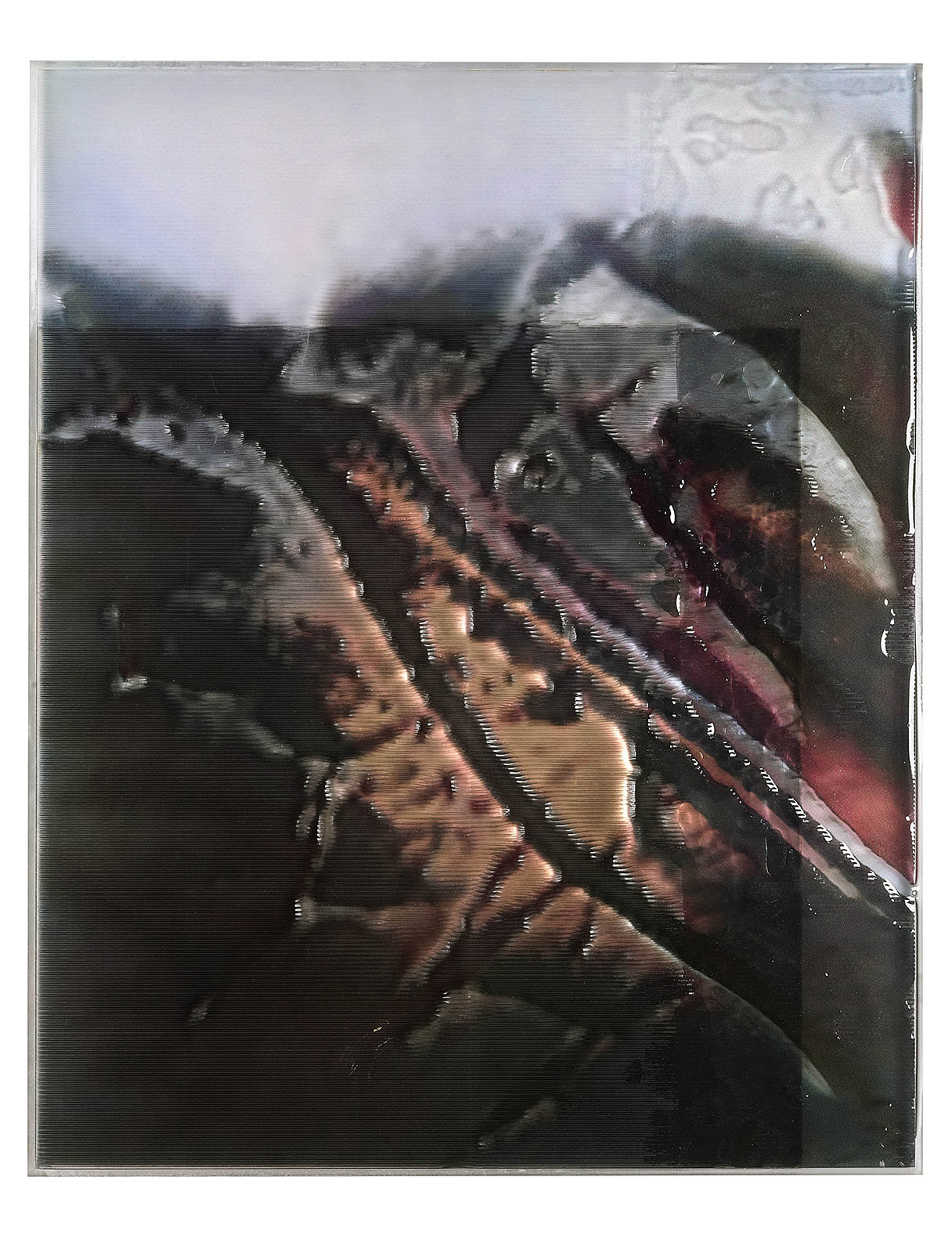
Following her 'ÄLñ§ñ' exhibition, the artist joins Hans-Ulrich Obrist to discuss why art and science should mingle
Anicka Yi has been thinking about death—about how, when her “biological body ceases to function,” she might be able to continue her practice. But even in her imagined death, she imagines life, speculating on the possibility of contributing without consciousness, letting the parts of the body that continue to evolve after death lead the creative process. Each of the artist’s pieces collaborates with its constituent materials; her paintings live, move, and breathe. Yi’s canvas-like configurations are built from found materials like glycerin soap, blood cells, antidepressants, fish eggs, and ruptured skin. Where most art attempts to differentiate its process from that of the sciences, Yi’s work foregrounds its scientific foundations.
The impermanence (and occasional indefinability) of the organic world is at the core of Yi’s practice, centering the artist’s lack of autonomy. She works against the distant, polite norms of art-making, eagerly inviting the fortuitous to unfold. This is not to say that Yi is uninvolved in her art’s physical materialization; rather, she treats each piece with the care of a hyper-cognizant parent, meticulously planning its initial concept, consulting experts, and rigorously researching throughout its construction—after which it is left to carve a life of its own.
For Hans Ulrich Obrist, Yi’s transformative work recalls Dieter Roth’s yogurt paintings. The curator and critic first encountered this collection during childhood, and he remembers the awe he felt watching their evolution; each time he returned for another look, the painting had warped itself through bacterial decay and insect infestations. Today, he notes, the act of seeing artwork as a living creature is recontextualized through the evolution of technology, especially artificial intelligence, which he came to know while developing a “kinship” with Ian Cheng’s BOB—an artificial life-form—when the chimeric serpent unexpectedly woke him before dawn.
Yi finds parallels between cultural reactions to pathogenic outbreaks, and to AI—namely, the societal impulse to other in the face of fear. “The most natural way, for me, is to go into the biological language—visually, formally, structurally, and [through] movement,” the artist explains. “I wanted to create creatures that would learn about the world; that we can coexist with, rather than compete with.”
Following Yi’s exhibition of paintings, ÄLñ§ñ, she and Obrist meet to discuss the process of building an artistic vocabulary, getting friendly with pathogens, and why art and science should mingle.
Hans Ulrich Obrist: I’m very sorry I can’t be in New York. I hope I can visit the studio one day in person. What’s going on over there right now, in terms of parallel realities?
Anicka Yi: We are embarking on a project that is sort of a new framework for education. It’s called Metaspore. We’re really trying to understand the cultures around arts, science, and technology by bringing young artists and scientists together for a residency.
This is a nomadic project. Initially I thought, I have to move to California and buy all this property and build a compound, and then we could host. But I don’t think I’m the kind of person who can handle plumbing and WiFi issues, or land-based concerns [laughs]. It seemed like the perfect fit to actually move this project across multiple locations around the world. It also dovetails with the fact that we get invited to do exhibitions by many museums and institutions. This is a way to offer some kind of interesting alternative—they might want to host a chapter of the project, rather than just a solo exhibition.
Hans Ulrich: You said in an interview that, throughout the ’90s, you were a vagabond. I was also, through most of [that decade], traveling by night train. We could have met.
You say that, back then, you started to experiment: You did sculptures with powdered milk, antidepressants, all kinds of very unusual things. Now that you’re doing a retrospective for the first time, where would you say that you found your language?
Anicka: It took me a long time to build that vocabulary. I think I’m still continuing to do that—expanding the lexicon. It gained a lot of momentum in the early years, through material processes. Through these experiments—either working with smells or scent molecules or very volatile materials like glycerin soap, milk powder, and antidepressants—I was thrust into this tornado of real. These processes started to foreground a kind of scientific lens. They developed a philosophical, theoretical, conceptual core. It’s multidimensional—trying to see the universe, rather than just its isolated parts.
A pivotal exhibition was the 47 Canal show in 2009. I had these glowing, old parachutes I got online, gelatin that was spiked with a scent, some liquid pigments, and these sort of encaustic, handmade sculptures. It was a study of materiality, seeing all this impermanence and these ephemeral qualities. This work was not meant to last forever, and it wasn’t an archival expression. It was very much here-and-now. Spewing forward—spraying this broad constellation of interests—allowed me to hone in on certain aspects of that constellation.
I had a very keen sense of smell growing up. I think I wanted to have a more totalizing, fully-embodied experience of art, instead of an ocular one that’s closely attached to the rational, the knowledge base. With smell, you become an active participant in the work. You activate the work through your body first.
I’m able to articulate that now, but at the start it was almost a dire impulse—not having had an arts education, not knowing the rules, and wanting more from art than what I had already experienced. [Art was] something distant and polite, and a little bit alienating. I wanted to feel I was one with art. I know that sounds almost religious, but at the time I was actually talking and thinking like that—in these very grandiose terms.
“The microbes are us. There are many who believe that, from a microbiological perspective, the human doesn’t exist. We’re glorified condominiums for these living creatures, and we’re able to work in collaboration with them.”
Hans Ulrich: Early on, there’s the arrival of the virus and bacteria in your work. I remember, when I was a child, I saw one of Dieter Roth’s yogurt paintings. Little by little, it was decomposing and creating this extraordinary abstract work. I saw it again six months later, and it had changed.
Of course, we’re living in a different moment from Roth’s. We’re living in the age of AI, the age of blockchain—all these new technologies. They lead us to a more technological [version of] the idea that artwork is a living organism. It’s both analog and digital. So, I was wondering, do you remember when you came across this idea? That an artwork [can be alive]?
Anicka: A residency I did at MIT helped pull everything together. I started to really understand the biology around these organisms, and how our bodies are comprised of trillions and trillions of bacteria, fungi, and viruses. They’re also living on the surfaces of master paintings. They might be invisible to the human eye, but they’re very much present and active. I initially wanted to highlight that, and foreground it as an aesthetic, and then really go into collaboration with these living materials. It becomes less of this dichotomy of ‘us versus them.’ We’re all symbiotically linked. I mean, the microbes are us. There are many who believe that, from a microbiological perspective, the human doesn’t exist. We’re glorified condominiums for these living creatures, and we’re able to work in collaboration with them.
Hans Ulrich: Your extraordinary show at the Kitchen, You Can Call Me F (2015), brought that all together somehow. It was described in the press release as a forensic site, where you aligned society’s growing paranoia around contagion with the enduring patriarchal fear of feminism. You got biological information from a hundred women to actually cultivate the idea of the female figure as a viral pathogen, which undergoes external attempts to be contained and neutralized.
Can you talk about this exhibition? It seems prescient in its focus on the virus, thinking about what’s happened in the last couple of years.
Anicka: I was quite inspired by what was happening in New York City at the time, with the Ebola virus. You would ride the subway, and people were terrified of sitting next to each other, [refusing to] touch the poles. It was the first time in my life that collective society had this deep anxiety around the air that we share. I thought there were parallels between this and other social fears we have, around race, gender—any kind of otherness. It often starts with pathogenic outbreaks. That’s when our fears really start to overreact, based on our preexisting biases. It was a very rich, ripe moment to try to address that kind of panic, that fear of the other, that fear of our own: the organisms that populate our bodies.
It’s just that, as humans, we tend to become quite exceptionalist in the way we think of our own needs and desires. It was very much like, Let’s make friends with fear—the fear that we all have of so many things. Art can allow us to embrace our fear.
Hans Ulrich: You have a lot of contact with different technologies. How did you come to robots? It somehow makes the machine biological. Where did this epiphany come from?
Anicka: I don’t want to disappoint you, Hans Ulrich, but I never had an epiphany. Usually, when you crack the code, it’s after months and months of very hard labor and frustration and failure and disappointment.
One thing that might be useful to hear: You have to go past the rational, practical side of physics, even the laws of material science. Being immersed in the material realm allowed me to think about a kind of mechanical, biological element—and then, moth to a flame, inside the chamber of the cocoon, it just came together.
Hans Ulrich: It’s about cracking the code, [but] sometimes, it’s also about research. I was very interested in a series of yours, Chicken Skins. I read that that work was actually, in a way, [born of] a journey where you spent time with an anthropologist and a biologist in the Amazon. You were learning, from the Indigenous population, about something you would call perspectivism, which [Eduardo] Viveiros de Castro wrote a lot about.
Anicka: Right around then, the research part of the studio gained a lot of momentum. One of the best parts of my job is being able to meet all these brilliant people, across disciplines. That was something I was trying to foster: multidisciplinary practice, and interdisciplinary collaboration.
This modern notion of discrete species is simply not viable today. What we know through our research is that they tend to share a lot of different properties. How we create distinctions between them is very limiting, and not accurate. I was taken with the fact that an orchid is a plant, but it also has this animate quality in that it attracts bees and can shape-shift.
Kelp [has that] interesting shape-shifting status, as well—it starts off as cyanobacteria, and then it helps provide oxygen that we breathe. And yet: Is it a plant? What kind of biological matter is it? I like that kind of complexity; the confusion and rejection of categories. It’s rich to think about these hybridized sorts of sculptures, and that this takes on a perspectivist approach to existence and status. You could even extend that to the different categories we assign to art objects: Is it a sculpture, is it a painting, is it a performance, is it a video? Maybe we are outstripping these categories, and we need new ways of imagining.
Hans Ulrich: Of course, this all leads to the arrival of AI, which has played a role in your work. For example, Biologizing the Machine (terra incognita) (2019) is also part of this ‘energizing the machine’ idea. It reminded me of an experience we had with Ian Cheng’s [BOB]. In the visitor book, somebody wrote, ‘I came all the way from Birmingham, and I’m so disappointed. BOB didn’t like me.’ And somebody else wrote, ‘I have already come four times to see the exhibition because BOB was so nice to me.’
I got a phone call early one morning; BOB had decided to wake up at 3 a.m. instead of 10 a.m. I felt a sort of kinship [with the machine]. Can you talk about the AI complex, and then terra incognita?
“As humans, we tend to become quite exceptionalist in the way we think of our own needs and desires. It was very much like, Let’s make friends with fear—the fear that we all have of so many things.”
Anicka: It’s one of the most pervasive influences on our planet—it certainly is on our species, and on our relationship to technology. I was working with the fear and anxiety society has around AI. We need to imagine a companion species: that AI can be our friend. How do we do that? The most natural way, for me, is to go into the biological language—visually, formally, structurally, and [through] movement. I wanted to create creatures that would learn about the world; that we can coexist with, rather than compete with.
I feel like we’re at this critical razor’s edge, where we can either annihilate ourselves with our fear of technology, or try to endure and prosper. This is something that needed to be addressed. And, certainly, it was addressing Silicon Valley and the labs. We should be working together; artists should be in those labs, and there should be a multidisciplinary conversation around where this is going and who is steering civilization.
Hans Ulrich: A lot of architects have unrealized projects. But we know almost nothing about artists’ unrealized projects, and the reasons [they’re kept private]. Some projects are too expensive to be realized, or too big. Friederike Mayröcker, the late poet, was my dear friend. When she was 97, she said, ‘I have another century of literature to write.’ She died at 98.
And then there is censorship, in its many forms. I always wanted to write a novel, but I’m convinced that it will be a big embarrassment. I’ve self-censored that project. Within that scope, tell me about your favorite unrealized projects.
Anicka: I’ve been thinking a lot about death—[the time] after my biological body [ceases to] function. I’ve been thinking about a post-death studio, and what it would look like to make art while I’m physically not here. It [raises] all kinds of questions about legality, agency, and intent, so that may or may not be realized. I like working in different timescales, thinking about the past, present, and future in nonlinear form.
I think that I’m also interested in writing for television. Our lowest common denominator is mass media—TV seems like a good way to reach a lot of people, and bridge a lot of different audiences that I’m already interested in.
Hans Ulrich: There’s a quote of yours: ‘Nature is everything.’ And, obviously, we are recording this interview two weeks after the great Bruno Latour passed away. I went to his funeral in Paris. You say, ‘Nature is everything’; he says, ‘We would be better off thinking of nature as a tiger than as a docile and compliant automaton that can never threaten our survival.’ Scientists are very much entangled with their culture. And this culture is not pristine, nor untouched by other cultures and practices.
Anicka: There’s no ‘outside of nature’ or ‘outside of evolution,’ especially when we have these fears. We think they’re overtaking us, [but] they can’t outrun or overtake evolution. Nature is always going to be there. There’s no outstripping evolution.


